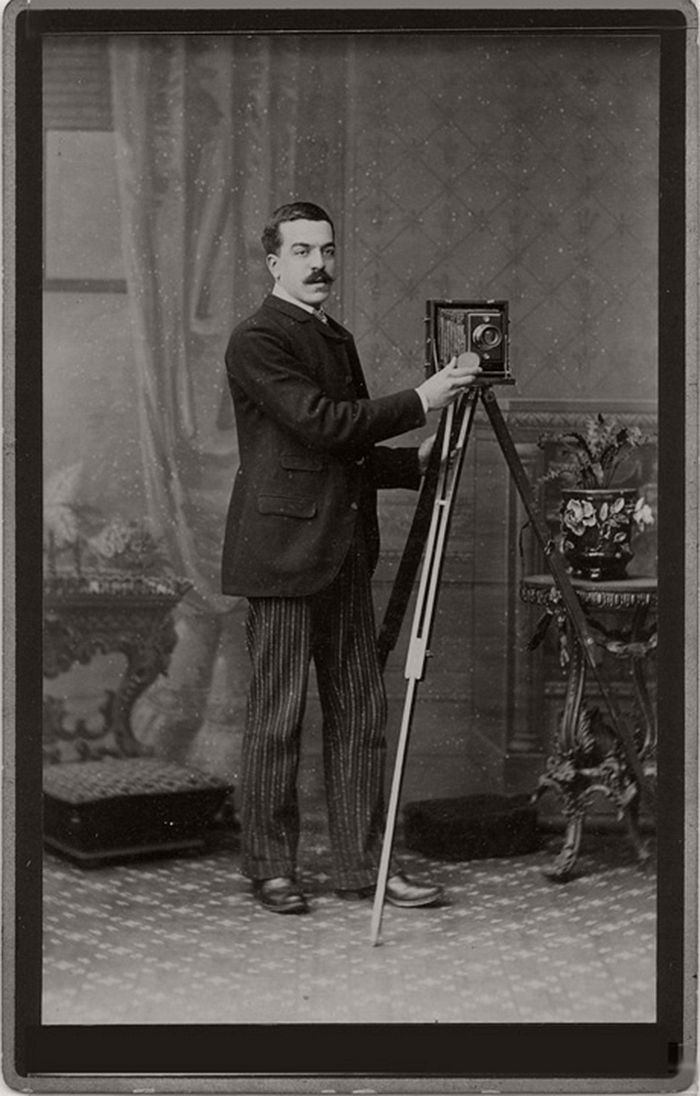Dry Plate Collodion
I love Westerns! I have always seen these old-fashioned cameras in films and was interested in learning more, so I researched Dry Plate Collodion. According to Britannica dry plate is a "glass plate coated with a gelatin emulsion of silver bromide" that was used to take pictures in 1871 (Britannica). Further research discovered the plates were "sensitized with silver salts" (National Museum of African Art). I found an article, "Brief History of Black and White Photography," by Rosie Torres, that gave me more information about Dr. Maddox. I found that Dr. Richard Leach Maddox, who invented dry plates to improve the current photography method of wet plates, really enhanced photography. His invention was very innovative because it was more versatile (Torres). After all, it was dry.
Further investigation showed that Dr. Maddox's new invention was safer as it did not use the dangerous chemicals of the wet process and had quicker processing (National Museum of African Art). In The Civil War: The Birth of Photojournalism, David Morgan discusses how photography allowed Americans to experience war in its brutal reality, greatly shaping people's perspectives. Dry plates must have had a similar impact on people; seeing their self-portraits or different places that had been captured would open new worlds to them. Having the new technology of good storage created by Dr. Maddox will allow more people in more places to experience having their picture taken. Professor Nordell mentioned Fenton in his video Before There Was Pixels Part 2, an English Photographer covering the Crimean War in 1855, and how he needed to bring a huge wagon to take photos because it was the wet Collodion process. I found the photo of Fenton's assistant with the huge wagon interesting, as I thought it would be extremely burdensome compared to taking pictures today.
Because the items required to process the film took so much space, a wagon was needed, and they were fragile; comparing this to Dry Plate Collodion technology is a big improvement as the dry plates could be stored undeveloped for a long time (National Museum of African Art). The ability to capture a moment in time and preserve it for others to see is important because it will allow people in the future to experience that moment from what they see. Without this technology, that moment or event would be erased. Even though we may have the stories written down, words can only do so much to relay that moment – words can not accurately describe something you have never seen before; there will always be blanks left out your imagination can not fill. That is why photography is so important. In the video, Weegee tells how he mentions another photographer, Lee, who he quoted as saying, "Something happens a power an part of a fleeting second it up to the photographer to capture that on film because like a dying day that things will never come back again."
When it comes to my camera, there are some differences compared to the Dry Plate. First, I can hold the camera as it is much lighter, no chemicals are involved, my view is more accurate to what the camera is seeing, and it is faster to take the picture. Developing the film cannot even compare—no darkroom or chemicals are needed. I plug in a cord to my computer and download the photos—quicker and easier!
This photograph above was featured on Monovision Black & White Phto Magazines Website, no name mentioned who took the photo.
Photo by Daniel Fraher on September 21, 2024.
I took this picture at A.T.Y Bar & Bonbons in Mystic, CT, featuring their hand-made chocolates. In the picture, there is a plate with chocolates that look like they are made out of rocks. A skinny glass on the left side of the glass draws your eye towards the chocolate. Also, a background menu with bites gives my picture depth and relays the "bite" of the sweet treat I am about to eat. I took this picture Saturday for my family's day trip to Mystic to enjoy the fall weather.


Comments
Post a Comment